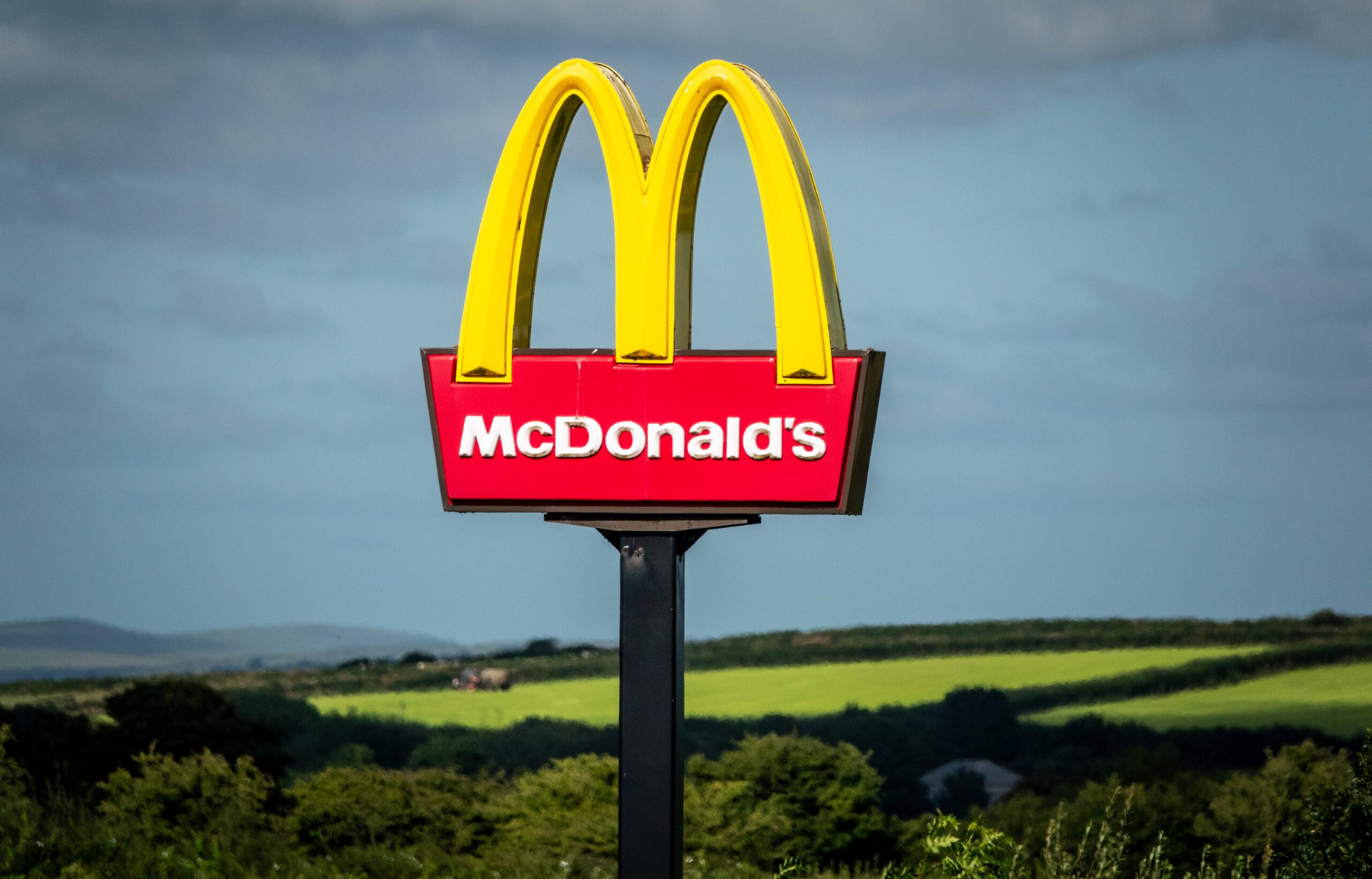McDonald's was making controversial headlines this week when the buzz turned more serious. Here are main details of the McDonald's E. coli outbreak.

These Are the 10 States Where McDonald’s E. coli Cases Have Happened, Say National Experts

McDonald’s was already on the national radar early this week after Donald Trump staged a photo opportunity by standing at the fryer last Sunday. By Tuesday afternoon, headlines about the iconic fast-food chain had taken a hard pivot when experts traced a wave of E. coli infections back to the McDonald’s Quarter Pounder. At press time, one death and 49 reported cases of illness have been linked to the outbreak, which according to reports has impacted 10 states.
In an October 22 Food Safety Alert, the Centers for Disease Control and Prevention (CDC) announced that it’s now racing to trace the root cause of contamination in what they call a “fast-moving outbreak investigation.” The U.S. Food & Drug Administration (FDA), U.S. Department of Agriculture (USDA), Food Safety Inspection Services (FSIS), and several other public health agencies are working in support of the investigation.

States where McDonald’s E. coli cases have been reported
The CDC is updating a map as the case count ticks upward. The map indicates that most states affected are located in the Midwest and Mountain regions of the country.
Though a total of 10 states have attributed E. coli cases to the McDonald’s outbreak, more than half of the incidents have occurred in just two states:
- 26 cases have been reported in Colorado
- nine have been reported in Nebraska.
The one reported death was “an older adult from Colorado,” according to the CDC.
The map indicates there have also been incidents of illness in:
- Utah (4)
- Wyoming (4)
- Kansas (1)
- Iowa (1)
- Missouri (1)
- Wisconsin (1)
- Montana (1)
- Oregon (1)
Ten hospitalizations related to the outbreak have also been confirmed, one of which involved “hemolytic uremic syndrome, a serious condition that can cause kidney failure.”
Of the 49 current cases, the ages of the infected individuals range from 13 to 88 years old.
How the McDonald’s E. coli outbreak appears to have started
Early indications suggested that two ingredients—raw, sliced onions and quarter-pound beef patties—could have caused the outbreak. “Preliminary traceback and distribution information reviewed by FDA shows that slivered onions served on Quarter Pounders are a likely source of contamination,” according to the CDC report.
Health authorities are now working to determine if the possibly affected onions were sold elsewhere and notes that McDonald’s “has stopped using fresh slivered onions and quarter pound beef patties in several states.”
However, the FDA added that diced onions and other types of beef patties used at McDonald’s have not been implicated in the outbreak.
This outbreak comes amid the second massive meat recall in two months, though it’s not been reported that the fast food behemoth gets their meat from the Oregon manufacturer where millions of pounds of meat were recalled earlier this month for Listeria concerns.
How McDonald’s restaurants are responding to the E. coli outbreak
McDonald’s locations in Colorado, Kansas, Utah, Wyoming, and portions of Idaho, Iowa, Missouri, Montana, Nebraska, Nevada, New Mexico, and Oklahoma, have all suspended use of the two suspected ingredients for the time being. Quarter pound beef patties are also unavailable for purchase in several states at the moment.
On Wednesday, McDonald’s USA President Joe Erlinger joined NBC’s TODAY to address the public’s concerns. “We are very confident that you can go to McDonald’s and enjoy our classics. We took swift action yesterday to remove the Quarter Pounder from our menu,” he said. “I want to say to our consumers that you can confidently go to McDonald’s today.”
In the hours after the outbreak was announced, McDonald’s shares dropped roughly 7% in trading, suggesting that confidence remains shaky.
E. coli (Escherichia coli), primarily known for creating infections in the GI and urinary tracts, is a group of bacteria that can be harmless at times, according to the Cleveland Clinic. A particular type of E. coli, known as Shiga toxin-producing E. coli (STEC), is the most likely to cause more severe illnesses and accounts for around 265,000 infections each year in the US.
According to the Cleveland Clinic, common symptoms of an E. coli infection include:
- Watery diarrhea (sometimes bloody)
- Low fever
- Loss of appetite
- Nausea
- Vomiting
- Stomach pains and cramps
- Fatigue
If you’ve recently been to a McDonald’s or think you may be experiencing E. coli symptoms, the CDC recommends reaching out to your healthcare provider.
For daily wellness updates, subscribe to The Healthy by Reader’s Digest newsletter and follow The Healthy on Facebook and Instagram. Keep reading:
-
- Walmart Just Recalled Almost 900,000 Packages of a Great Value Product
- Kroger and 15 Other Grocers Just Recalled More Than a Dozen Products for Meat Safety Concerns
- 60,000 Containers of a Popular Nutritional Supplement Were Recalled in 20 States and Puerto Rico
- Fisher-Price Recalls 21 Models of a Popular Product After 5 Deaths Reported




















